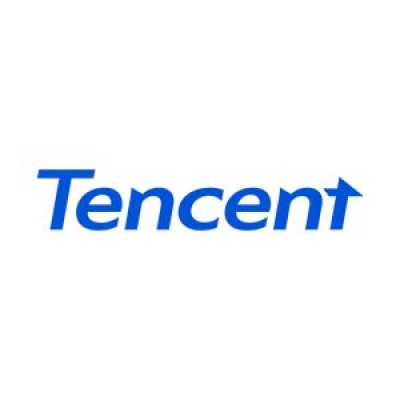The New Wave of Investment and Innovation in China: A Tale of Malls and AI
May 28, 2025, 3:55 am
In the bustling landscape of China’s economy, two stories emerge, each a testament to the country’s dynamic evolution. One tale unfolds in the realm of real estate, where a private equity firm is poised to acquire a significant portfolio of shopping malls. The other narrative centers on the tech sector, where artificial intelligence is reshaping the coding landscape. Together, they paint a vivid picture of a nation in transition, where investment strategies and technological advancements intertwine.
Let’s first delve into the world of real estate. PAG, a prominent alternative investment firm, is set to launch a massive fund worth USD 7 billion. This fund aims to acquire 48 shopping malls from the Dalian Wanda Group, a major player in the Chinese property market. Imagine a chessboard, with PAG making strategic moves to capture valuable assets. The malls, located in key cities like Beijing, Guangzhou, and Chengdu, represent prime real estate, each a bustling hub of commerce.
PAG’s approach is methodical. They plan to inject USD 700 million of their own capital, taking on the primary risks in pursuit of higher returns. This is akin to a captain steering a ship through turbulent waters, ready to face the challenges ahead. A consortium of state-owned banks will back the venture with USD 4.2 billion in loans, while additional funds will be raised through mezzanine financing. This layered strategy is designed to attract a diverse pool of investors, from insurers to industrial funds.
However, the acquisition is not without its complexities. The malls vary in location and business models, creating uncertainty in rental income. Analysts project annual returns of 6 to 8 percent, but the specter of underperformance looms large. The intricacies of mezzanine financing add another layer of risk, as these instruments rank lower in repayment priority. It’s a high-stakes game, where the potential for profit is matched by the possibility of loss.
Meanwhile, in the tech sector, Tencent Holdings is navigating its own transformation. With 85 percent of its programmers utilizing the AI coding assistant CodeBuddy, the company is contemplating significant workflow changes. This is not just a trend; it’s a revolution. CodeBuddy has reportedly reduced coding time by 40 percent, a staggering efficiency boost. Picture a factory assembly line, now operating at lightning speed, thanks to the introduction of advanced machinery.
Tencent’s commitment to innovation is evident. The recent upgrade of CodeBuddy, which includes a new autonomous development agent named Craft, signals a shift towards greater organizational efficiency. The goal is clear: harness individual productivity to enhance the entire organization. This mirrors the broader trend in the tech industry, where companies are racing to integrate AI into their operations.
Tencent is not alone in this endeavor. Competitors like JD.Com are also embracing AI, launching their own coding assistants. The landscape is evolving rapidly, with AI agents becoming increasingly sophisticated. The accuracy of these tools is expected to reach 90 percent for complex tasks, making them commercially viable sooner than anticipated. It’s a race against time, where the winners will be those who adapt swiftly.
As these two narratives unfold, they highlight a broader theme in China’s economic landscape: the interplay between investment and innovation. The acquisition of shopping malls by PAG reflects a strategic investment in physical assets, while Tencent’s embrace of AI signifies a shift towards digital transformation. Both are essential components of a thriving economy, each feeding into the other.
The implications of these developments are profound. For investors, the acquisition of Wanda’s malls represents an opportunity to tap into China’s consumer market. The malls are not just buildings; they are gateways to a vibrant retail ecosystem. However, the risks associated with varying rental incomes and market fluctuations cannot be ignored. Investors must tread carefully, balancing potential rewards against inherent uncertainties.
On the other hand, the rise of AI in coding is reshaping the workforce. As machines take on more tasks, the role of human programmers is evolving. They must adapt, learning to work alongside AI tools to maximize productivity. This shift could lead to a redefinition of job roles and skill sets, creating new opportunities while rendering some positions obsolete.
In conclusion, the stories of PAG and Tencent are emblematic of a larger narrative in China. They reflect a nation at the crossroads of tradition and modernity, where investment strategies and technological advancements converge. As the landscape continues to shift, one thing is clear: China is not just a participant in the global economy; it is a formidable player, poised to shape the future. The dance of investment and innovation is just beginning, and the world is watching closely.
Let’s first delve into the world of real estate. PAG, a prominent alternative investment firm, is set to launch a massive fund worth USD 7 billion. This fund aims to acquire 48 shopping malls from the Dalian Wanda Group, a major player in the Chinese property market. Imagine a chessboard, with PAG making strategic moves to capture valuable assets. The malls, located in key cities like Beijing, Guangzhou, and Chengdu, represent prime real estate, each a bustling hub of commerce.
PAG’s approach is methodical. They plan to inject USD 700 million of their own capital, taking on the primary risks in pursuit of higher returns. This is akin to a captain steering a ship through turbulent waters, ready to face the challenges ahead. A consortium of state-owned banks will back the venture with USD 4.2 billion in loans, while additional funds will be raised through mezzanine financing. This layered strategy is designed to attract a diverse pool of investors, from insurers to industrial funds.
However, the acquisition is not without its complexities. The malls vary in location and business models, creating uncertainty in rental income. Analysts project annual returns of 6 to 8 percent, but the specter of underperformance looms large. The intricacies of mezzanine financing add another layer of risk, as these instruments rank lower in repayment priority. It’s a high-stakes game, where the potential for profit is matched by the possibility of loss.
Meanwhile, in the tech sector, Tencent Holdings is navigating its own transformation. With 85 percent of its programmers utilizing the AI coding assistant CodeBuddy, the company is contemplating significant workflow changes. This is not just a trend; it’s a revolution. CodeBuddy has reportedly reduced coding time by 40 percent, a staggering efficiency boost. Picture a factory assembly line, now operating at lightning speed, thanks to the introduction of advanced machinery.
Tencent’s commitment to innovation is evident. The recent upgrade of CodeBuddy, which includes a new autonomous development agent named Craft, signals a shift towards greater organizational efficiency. The goal is clear: harness individual productivity to enhance the entire organization. This mirrors the broader trend in the tech industry, where companies are racing to integrate AI into their operations.
Tencent is not alone in this endeavor. Competitors like JD.Com are also embracing AI, launching their own coding assistants. The landscape is evolving rapidly, with AI agents becoming increasingly sophisticated. The accuracy of these tools is expected to reach 90 percent for complex tasks, making them commercially viable sooner than anticipated. It’s a race against time, where the winners will be those who adapt swiftly.
As these two narratives unfold, they highlight a broader theme in China’s economic landscape: the interplay between investment and innovation. The acquisition of shopping malls by PAG reflects a strategic investment in physical assets, while Tencent’s embrace of AI signifies a shift towards digital transformation. Both are essential components of a thriving economy, each feeding into the other.
The implications of these developments are profound. For investors, the acquisition of Wanda’s malls represents an opportunity to tap into China’s consumer market. The malls are not just buildings; they are gateways to a vibrant retail ecosystem. However, the risks associated with varying rental incomes and market fluctuations cannot be ignored. Investors must tread carefully, balancing potential rewards against inherent uncertainties.
On the other hand, the rise of AI in coding is reshaping the workforce. As machines take on more tasks, the role of human programmers is evolving. They must adapt, learning to work alongside AI tools to maximize productivity. This shift could lead to a redefinition of job roles and skill sets, creating new opportunities while rendering some positions obsolete.
In conclusion, the stories of PAG and Tencent are emblematic of a larger narrative in China. They reflect a nation at the crossroads of tradition and modernity, where investment strategies and technological advancements converge. As the landscape continues to shift, one thing is clear: China is not just a participant in the global economy; it is a formidable player, poised to shape the future. The dance of investment and innovation is just beginning, and the world is watching closely.

